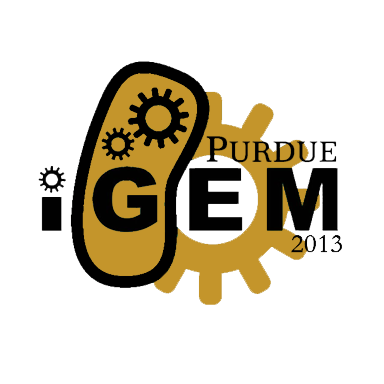Overview
Synthetic biology is a rapidly growing field of science that promises to revolutionize almost every part of our technology. However, one of the biggest drawbacks of synthetic biology compared to other fields is the lack of standardization within the field. Some of this can be attributed to the nature of the field itself; biological systems are much harder to control than electrical or mechanical ones.
A good portion of the problem though, comes from how the genetic parts are characterized and presented. The iGEM competition has sought for many years to create a “Registry of Standardized Parts” so that iGEM teams and other researchers can submit and use genetic parts that have been proven to work and function. While creating and characterizing new parts and devices to be added to the registry are important, if the information needed to use that part is not communicated efficiently, the parts themselves are useless. This year, the Purdue iGEM team set out to solve this problem by creating a definitive characterization standard for the registry. By talking and collaborating with over fifty other iGEM teams around the world, we have developed a way to standardize how characterization data is submitted and presented in the registry.
This system encompasses an easy, template-based system to enter data of a part into the iGEM registry. Once implemented, our solution will revolutionize the Registry of Standardized Parts and add some much-needed standardization to the field of synthetic biology.
Background
As everyone in iGEM already knows, using the Registry of Standardized Parts can be a very frustrating endeavor. Searching through the registry with ease takes practice, and even then it can be difficult to find good parts to use. Many of the parts in the registry have little to no characterization data present on their registry pages. And some parts in the registry have been very well characterized, but all with different assays and techniques. So it can be very difficult to compare multiple parts that have good data because the data is so different.


After weeks of traversing the registry and igem.org, we finally came to the conclusion that the main, underlying issue is that there is currently no standard for characterization data in the registry. Teams have no definitive guideline to follow to characterize their parts.
So to solve this problem, we had to figure out where to start. As is standard with most engineering problems, we started with looking at prior art. One of the first things we looked at was Drew Endy's datasheet from 2008, shown below.

Phase I
To start this process, we gathered as many personal emails as possible from team roster pages on iGEM.org and Google searches. We emailed at least one person on every single team in the 2013 competition in late May. We sent out a simple survey to gauge how various iGEM teams felt about the current state of the registry, what data is most important to represent on a part page, how often teams find parts with no characterization, and if they would be in favor of a characterization standard for the registry. We asked individuals to fill out the survey instead of entire teams, and we received over 170 responses. Some of the results are below:

 "
"
